 W
WSoensanim Bon Yeon is the dharma name and title of Jane McLaughlin-Dobisz. She is the guiding teacher of the Cambridge Zen Center of the Kwan Um School of Zen in Cambridge, Massachusetts. She received dharma transmission in 2000, and is also a published author and editor of the book The Whole World is a Single Flower by Seungsahn.
 W
WGeorge Bowman, or Bo Mun Soen sa Nim, is a Zen master and licensed psychotherapist living at Furnace Mountain in Clay City, Kentucky. He received Dharma transmission from Seung Sahn Soen Sa Nim in 1992, and is a former teacher in the Kwan Um School of Zen. He was a founding member of the Providence Zen Center in 1972 and also did koan study with Joshu Sasaki from 1977 to 2003. Furnace Mountain is run by Dae Gak Soen Sa Nim—another former Kwan Um line teacher. He was a resident teacher at the Cambridge Buddhist Association from 1991 to 1999, and in 1994 became a guiding teacher of the Institute for Meditation and Psychotherapy. Today he travels to Boston, Massachusetts most months to lead a "floating zendo" named the Single Flower Sangha. Bowman has given inka to his student David Dayan Rynick, who was the first individual to be acknowledged as a teacher outside of the Kwan Um lineage.
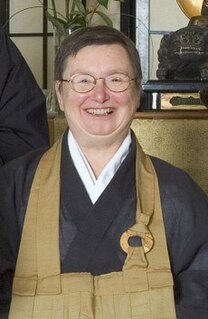 W
WGyokuko Carlson is a Soto Zen roshi and abbess of Dharma Rain Zen Center in Portland, Oregon, United States.
 W
WEijun Linda Cutts is a Sōtō Zen priest practicing in the lineage of Shunryu Suzuki, a Senior Dharma Teacher at the San Francisco Zen Center. Cutts is a Dharma heir of Tenshin Reb Anderson, having received Dharma transmission from him in 1996. She served as co-abbess of the San Francisco Zen Center from 2000 to 2007, and had first begun practice at the San Francisco Zen Center in 1971; later, she was ordained a priest by Zentatsu Richard Baker in 1975. Currently living at Green Gulch Farm Zen Center, as abbess she had been aware of the significance in being a woman in a leadership position in religion that has historically been a patriarchy. In this vein, within her first year as abbess she instituted the ceremony in which female ancestors could be honored. She became Central Abbess of San Francisco Zen Center in 2014.
 W
WDae Kwang is a Soen Sa Nim and is the current guiding teacher of the Providence Zen Center. He was ordained as a monk in 1987 and received Dharma transmission from Seung Sahn in 1996. He also serves as head abbot of the entire lineage, ranking just below Soeng Hyang.
 W
WDok Hyon Sunim is a Korean Zen monk ordained in Jogye order and the foremost disciple of Bop Jong Sunim. Sunim spent more than 16 years in seclusion intensely practicing Zen meditation and currently acts as the abbot of Kilsangsa temple in Seoul, taking care of Bop Jong Sunim's teaching and disciples.
 W
WHeinrich Dumoulin, S.J. was a Jesuit theologian, a widely published author on Zen, and a professor of philosophy and history at Sophia University in Tokyo, where he was Professor Emeritus. He was the founder of its Institute for Oriental Religions, as well as the first Director of the Nanzan Institute for Religion and Culture.
 W
WCharles Tenshin Fletcher is a British-born American rōshi.
 W
WKeian Genju was a Japanese Buddhist monk who studied classics under Ishō at Nanzen-ji.
 W
WRubén L. F. Hábito is a Filipino Zen rōshi of the Sanbō Kyōdan lineage.
 W
WRyushin Paul Haller, a Soto Zen roshi, is a former Abbot of the San Francisco Zen Center—a position he held from 2003 until February 2012. Leaving his homeland of Belfast in Northern Ireland in the early 1970s, Haller spent time in Russia, Afghanistan and Japan. He then went to Thailand for two years where he was ordained as a Buddhist monk. Coming to California in 1974, he entered Tassajara Zen Mountain Center and was later ordained as a priest by Zentatsu Richard Baker in 1980. He received shiho from Sojun Mel Weitsman in 1993, giving him authority to teach. Since the year 2000 Paul has also been the Teacher of Black Mountain Zen Centre in Belfast, Northern Ireland.
 W
WHyobong Hangnul (1888—1966) was a Korean Jogye Seon master who was the former head of the Jogye Order. The master of the late Kusan Sunim, Hyobong was the guiding teacher of several temples in Korea—including Songgwang-sa and Haein-sa. Stephen Batchelor has called him, "One of the most remarkable Buddhist teachers of this century in Korea." Hyobong was also the first Korean individual to serve as a judge for the Japanese Imperial government, though he resigned his position after being troubled with having sentenced a man to death. Having told no one of his resignation, he took to selling toffee in rural towns and eventually came to ordain as a sunim under Sŏktu Sunim. Hyobong went on to live as a traveling monk, visiting monastery after monastery for many years. He died in the posture of zazen while at P'Yoch'chung monastery in 1966.
 W
WShodo Harada , or Harada Rōshi, is a Rinzai priest, author, calligrapher, and head abbot of Sōgen-ji — a three-hundred-year-old temple in Okayama, Japan. He has become known as a "teacher of teachers", with masters from various lineages coming to sit sesshin with him in Japan or during his trips to the United States and Europe.
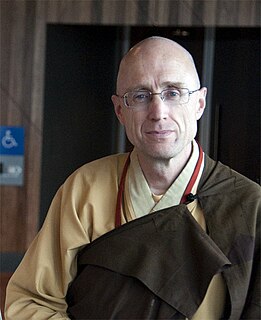 W
WHeng Sure is an American Chan Buddhist monk. He is a senior disciple of Hsuan Hua, and is currently the director of the Berkeley Buddhist Monastery, a branch monastery of the Dharma Realm Buddhist Association. He is probably best known for a pilgrimage he made for two years and six months from 1977–1979. Called a three steps, one bow pilgrimage, Heng Sure and his companion Heng Chau, bowed from South Pasadena to Ukiah, California, a distance of 800 miles, seeking world peace.
 W
WNanyue Huairang (677–744) was the foremost student of Dajian Huineng, the 6th Patriarch of Ch'an (Zen) and teacher of one of his Dharma heirs, Mazu Daoyi.
 W
WHuyền Quang (玄光), 1254–1334, his real name is Lý Đạo Tái (李道載), he was born in Vạn Tải village, Nam Sách District, Lạng Giang. Now it is Vạn Tải village, Thái Bảo commune, Gia Bình district, Bắc Ninh province. He was very knowledgeable, passed both Hương examination and Hội examination. He passed the Zhuangyuan exam in 1272 or 1274 and was appointed to work in the Imperial House Institute of the court. After the resignation, he followed Trần Nhân Tông to Trúc Lâm. As a Vietnamese Thiền Buddhist monk, the third Trúc Lâm Yên Tử. He was a great poet with many preserved poems. Along with Trần Nhân Tông and Pháp Loa, he is considered a great Thiền Buddhist master of Vietnam and it is considered as both of them as equal to the Six patriarchs of Zen Buddhism or the 28 Patriarchs of Indian Meditation.
 W
WImakita Kōsen was a Japanese Rinzai Zen rōshi and Neo-Confucianist.
 W
WJakushitsu Genkō was a Japanese Rinzai master, poet, flute player, and first abbot of Eigen-ji. His poetry is considered to be among the finest of Zen poetry. He traveled to China and studied Ch'an with masters of the Linji school from 1320 to 1326, then returned to Japan and lived for many years as a hermit. It was only toward the end of his life that he decided to teach Zen to others.
 W
WKanzan Egen (関山慧玄/關山慧玄) (1277–1360) was a Japanese Rinzai Zen Buddhist monk, founder of Myōshin-ji Temple and a principal member of the extant Ōtōkan lineage, from which all modern Rinzai Zen derives. Centuries later, Emperor Meiji conferred the posthumous name Muso Daishi (無相大師) to Kanzan.
 W
WBodhin Kjolhede is a Sōtō/Rinzai Zen roshi and Abbot of the Rochester Zen Center (RZC), a position he assumed when Philip Kapleau retired from teaching in 1986. He was ordained as a priest in 1976 and received Dharma transmission in 1986. He has authorized six of his disciples as teachers in their own right: Sante Poromaa, Kanja Odland, Sevan Ross, Gerardo Gally, Amala Wrightson, and Robert Goldmann. Additionally, Kjolhede has been offered transmission in a Sōtō lineage, but has thus far chosen to decline.
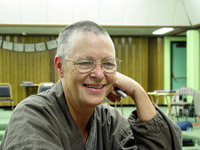 W
WSeirin Barbara Kohn is a Sōtō Zen teacher and head priest of The Austin Zen Center (AZC) in Austin, Texas, practicing in the lineage of Shunryū Suzuki. She was ordained as a Soto priest by Reb Anderson and received Dharma transmission from Zenkei Blanche Hartman—Kohn being Hartman's first Dharma heir. The Austin Zen Center's temple name, Zenkei-ji, is named after Blanche Hartman. Kohn became head priest and resident teacher of AZC on October 13, 2002. Before assuming her leadership of AZC, Kohn served as President of the San Francisco Zen Center. Kohn is a supporter of LGBT rights, having been known to offer "commitment ceremonies" for same-sex couples, stating, "I simply treat them all the same."
 W
WDr. Soyu Matsuoka, along with Sokei-an and Nyogen Senzaki, was one of the early Zen teachers to make the United States his home.
 W
WMujū Dōkyō, birth name Ichien Dōkyō, was a Buddhist monk of the Japanese Kamakura period. He is superficially considered a Rinzai monk by some due to his compilation of the Shasekishū and similar books of koans, but there is good evidence that he was also an eager student of the Tendai, Pure Land, and Hosso sects, and he is occasionally placed in the Shingon and Ritsu sects as well.
 W
WKyudo Nakagawa, or Nakagawa Kyūdō, was a Japanese-born Rinzai rōshi who for many years led Soho Zen Buddhist Society, Inc. in Manhattan's Lower East Side.
 W
WNakahara Nantenbō , also known as Tōjū Zenchū, Tōshū Zenchū 鄧州全忠, and as Nantenbō Tōjū, was a Japanese Zen Master. In his time known as a fiery reformer, he was also a prolific and accomplished artist. He produced many fine examples of Zen Art and helped bridge the gap between older forms of Zen Buddhist art and its continuation in the 20th century.
 W
WWendy Egyoku Nakao Roshi is the abbot emeritus and head teacher of the Zen Center of Los Angeles. She moved into the center in 1978 and later received Dharma transmission and inka from Bernard Glassman. She assumed her abbotship in 1999. According to James Ishmael Ford, "Under her leadership, the center expanded its mission to be family-friendly and socially active, creating an important experiment in the development of Western Zen." Nakao also conferred Dharma transmission to the first ever African-American woman, Merle Kodo Boyd. Nakao is a member of the American Zen Teachers Association. In May 2019 Egyoku Nakao stepped down as abbot, but remains its head teacher, to devote herself to further developing ZCLA's teaching curriculum. She at that time installed Deborah Faith-Mind Thoresen as the ZCLA's fourth abbot. Her book of modern koans, co-written with rōshi Eve Marko, was published in 2020.
 W
WEshin Nishimura is a Japanese Rinzai Zen Buddhist priest, the former president of Hanazono University in Kyoto, Japan, and also a major modern scholar in the Kyoto School of thought. A current professor of the Department of Buddhism at Hanazono University, he has lectured at universities throughout the world on the subject of Zen Buddhism. The author of many books, most written in the Japanese language, Nishimura has been a participant in many dialogues on the relationship of Zen to Christianity and Western philosophy.
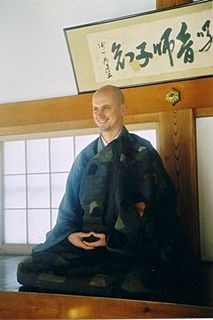 W
WMuhō Nölke (ネルケ無方) is a German-born Zen monk who was the abbot of Antai-ji, a Japanese Sōtō Zen temple in Shin'onsen in the Mikata District of Japan's Hyōgo Prefecture from 2002 until 2020. He has translated works of Dōgen and Kōdō Sawaki, and has authored five books in German and sixteen books in Japanese.
 W
WKanja Odland Roshi is a Zen Buddhist priest and teacher, in the lineage of Harada-Yasutani. She was born in Stockholm 1963.
 W
WJosho Pat Phelan, Buddhist name Taitaku Josho, is a Sōtō Zen priest and current abbot of Chapel Hill Zen Center in Chapel Hill, North Carolina—she has served as abbot there since 2000. Before coming to Chapel Hill, she practiced for twenty years at Tassajara Zen Mountain Center and the San Francisco Zen Center. Phelan began leading the Chapel Hill Zen Center in 1991, when there were just eight members including herself. As of 2001, the center had forty-five members and provides meditation instruction for approximately one-hundred and fifty people every year. Ordained as a priest by Zentatsu Richard Baker in 1977, she began Zen practice in 1969 and has also trained under Sojun Mel Weitsman, Robert Baker Aitken and Tenshin Reb Anderson Additionally, Phelan is a member of the American Zen Teachers Association, and in 1995 she received shiho from Sojun Weitsman at Tassajara.
 W
WGuang Qin was a renowned Buddhist monk, teacher and cultivator.
 W
WYantou Quanhuo (828–887) was an ancient Ch'an master of Yantou Monastery in Ezhou, China. A dharma heir of Deshan Xuanjin, Quanho was born in Quanzhou and became a novice monk at Baoshu Temple in Changan, China. Known to be an avid traveler, Yantou eventually began studying Ch'an under Deshan and received Dharma transmission from him. he then became master of Yantou Monastery, where he led a congregation of students. In 887 on the "eighth day of the fourth month" his temple was raided by bandits. When the bandits realized the temple had nothing of value to take, one of them stabbed Yantou—murdering him. it is said that his scream at death could be heard for ten miles. He was given the title Ch'an Master Clear Severity following his death. Yantou is the subject of several koan cases that appear in the Mumonkan such as case number 13, titled "Tokusan carries his bowls".
 W
WCaitriona Reed is a trans woman sensei of Thiền Zen Buddhism who also has a background in Vipassanā meditation. She co-founded Ordinary Dharma in Los Angeles, California; the rural Manzanita Village Retreat Center, located in San Diego County; and Five Changes, to mentor aspiring leaders, cultural creatives, and spiritual visionaries. Reed, a member of the American Zen Teachers Association, led retreats and workshops in Vipassana, Deep Ecology, and Buddhism 1981–2008. She received authority to teach Zen from Thich Nhat Hanh in 1992.
 W
WPaul Reps was an American artist, poet, and author. He is best known for his unorthodox haiku-inspired poetry that was published from 1939 onwards. He is considered one of America's first haiku poets.
 W
WRev. Kyōki Roberts (OPW) is a retired American Sōtō Zen priest. The single Dharma heir of Nonin Chowaney-roshi, Roberts received Dharma transmission in June 2001 and was a founding member of an organization of Sōtō priests known as the Order of the Prairie Wind (OPW), which is now defunct. Having studied Zen in Japan at the Zuiō-ji (瑞応寺) and Shōgo-ji (聖護寺) monasteries and in the United States at Minnesota Zen Center, San Francisco Zen Center, and Green Gulch Farm, Roberts was certified by the Sōtō School of Japan.
 W
WTiāntóng Rújìng was a Caodong Buddhist monk living in Qìngdé Temple on Tiāntóng Mountain in Yinzhou District, Ningbo. He taught and gave dharma transmission to Sōtō Zen founder Dōgen as well as early Sōtō monk Jakuen.
 W
WSasaki Gensō is a Japanese Rinzai Rōshi, a successor in the Tenryū-ji line of Rinzai Zen, a teacher of Jikishinkage-ryū swordsmanship, and a calligrapher.
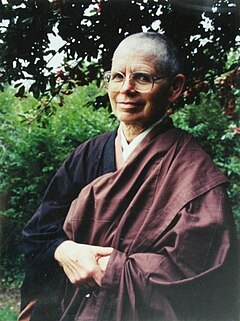 W
WMaylie Scott, Buddhist name Kushin Seisho, was a Sōtō roshi who received Dharma transmission from Sojun Mel Weitsman in 1998 at Tassajara Zen Mountain Center. She graduated from Harvard University in 1956 and obtained a master's degree in social work from the University of California, Berkeley. According to the book The Encyclopedia of Women and Religion in North America, "Maylie Scott described her primary teaching objective as empowering the sangha by making sure she is the facilitator, not the 'star.'" In addition to her occupation as a social worker, she was also on the Board of Directors for the Buddhist Peace Fellowship (BPF). In addition to serving for the BPF, Scott was also involved with the Buddhist Alliance for Social Engagement and frequently protested the import of weapons at the Concord Naval Weapons Station. A socially engaged Buddhist and teacher at the Berkeley Zen Center, Scott was known for her work in prisons and homeless shelters. Also, during the 1980s she studied under Maurine Stuart and, in April 2000, she founded Rin Shin-ji in Arcata, California. Professor Lloyd Fulton, of Humboldt State University, had once said of Scott that she is, "a strong-willed and organized woman."
 W
WSengai Gibon was a Japanese monk of the Rinzai school. He was known for his controversial teachings and writings, as well as for his lighthearted sumi-e paintings. After spending half of his life in Nagata near Yokohama, he secluded himself in Shōfuku-ji in Fukuoka, the first Zen temple in Japan, where he spent the rest of his life.
 W
WZenkei Shibayama , a former Abbot of Nanzen-ji, was a Japanese Rinzai master well known for his commentary on the Mumonkan. One of his better-known students was Keido Fukushima, abbot of Tōfuku-ji. Shibayama also taught at Otani University and was the head abbot of the entire Nanzenji Organization, overseeing the administration of over five hundred temples. Due to a number of lecture tours he undertook to the United States in the 1960s, and the translation of several of his books into English, Shibayama was a significant contributor to the establishment of Zen in America.
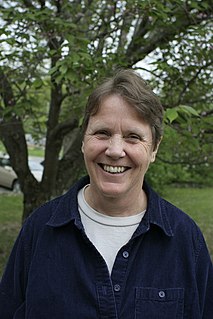 W
WSoeng Hyang Soen Sa Nim is a Zen Master and the Guiding Teacher of the international Kwan Um School of Zen, and successor to the late Seung Sahn Soen Sa Nim.
 W
WKobori Nanrei Sōhaku (1918—1992) was a Japanese Rinzai roshi and former abbot of Ryōkōin, a subtemple of Daitoku-ji in Kyoto, Japan. A student of the late Daisetz Teitaro Suzuki, Sōhaku was fluent in English and known to hold regular sesshins until the 1980s which many Americans attended. One of his American students is James H. Austin, author of Zen and the Brain. Austin writes of his teacher, "This remarkable person, Kobori-roshi, inspired me to begin the long path of Zen and stick to it. As a result, I have since continued to repair my ignorance about Zen and its psychophysiology during an ongoing process of adult reeducation."
 W
WShiba Sonome was a Japanese zen poet. She was an acquaintance and friend of Matsuo Bashō, and their correspondence is a treasure of zen and haiku history. On a final visit in 1694, Bashō paid homage to her in a haiku, hiragiku no me ni tatete miru chiri mo nashi, 白菊の目に立てゝ見る塵もなし, in the eye of a white chrysanthemum, there is not a speck of dust.
 W
WKazuaki Tanahashi is an accomplished Japanese calligrapher, Zen teacher, author and translator of Buddhist texts from Japanese and Chinese to English, most notably works by Dogen. He first met Shunryu Suzuki in 1964, and upon reading Suzuki's book Zen Mind, Beginner's Mind he stated, "I could see it's Shobogenzo in a very plain, simple language." He has helped notable Zen teachers author books on Zen Buddhism, such as John Daido Loori. A fellow of the World Academy of Art and Science—Tanahashi is also an environmentalist and peaceworker.
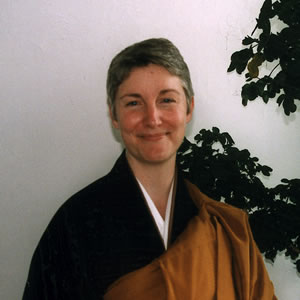 W
WBonnie Myotai Treace is a Zen teacher and priest, the founder of Hermitage Heart, and formerly the abbot of the Zen Center of NYC; she teaches currently in Black Mountain and Asheville, North Carolina. Myotai Sensei is the first Dharma successor of John Daido Loori, Roshi, in the Mountains and Rivers Order, having received shiho, dharma transmission, from him in 1996. Serving and training for over two decades eventually as vice-abbot of Zen Mountain Monastery, she was the establishing teacher and first abbess of the Zen Center of New York City. At the Monastery she was the Vice Abbot, the first director of Dharma Communications, editor of Mountain Record, and coordinator of the affiliates of the Mountains and Rivers Order. Treace, ordained as a Zen monastic, now lives as a lay teacher, working primarily with her long-term students.
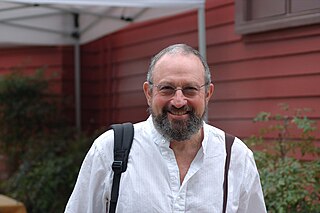 W
WGerry Shishin Wick is a Soto Zen roshi, author, oceanographer and abbot of Great Mountain Zen Center in Berthoud, Colorado, which he founded in 1996. He is one of the twelve Dharma Successors of the late Taizan Maezumi, receiving Dharma transmission and a Denkai from him in 1990. Prior to it, for 24 years he underwent Zen training with Maezumi, Shunryu Suzuki Roshi and Sochu Suzuki Roshi. He remained the president of White Plum Asanga, a Zen school in the Hakuyu Taizan Maezumi lineage, from 2007 to 2014.
 W
WWu Kwang Soen Sa Nim (1950–present), born Richard Shrobe, is head Zen teacher at Chogye International Zen Center of New York, a practice center of the Kwan Um School of Zen. Before coming to Zen practice Richard studied Hinduism under Swami Satchidananda. He is a social worker who incorporates Gestalt therapy in his counseling. In 1975 Wu Kwang began his Zen practice and received Dharma transmission from Seung Sahn in 1993. He is also a jazz musician.
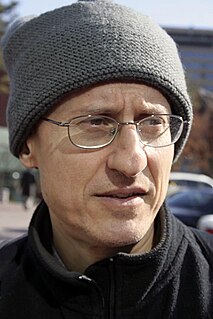 W
WWu Bong, born Jacob Perl, was a Zen master in the Kwan Um School of Zen. Perl was the head teacher of the European Kwan Um School of Zen. The first student of Seungsahn in the United States, he had previously practiced Zen in the Sōtō tradition at the San Francisco Zen Center under Shunryū Suzuki. He also spent one year studying the Nyingma school of Tibetan Buddhism at the Tibetan Nyingmapa Meditation Center in Berkeley, California under Tarthang Tulku.
 W
WRyoun Yamada, aka Yamada Ryoun or Yamada Masamichi, the son of the late Yamada Koun, is the current Zen master of San'un Zendo in Kamakura, Japan and the Abbot of the Sanbo Zen school of Zen Buddhism. Sanbo Zen is a lay organization of Zen, so Yamada also worked at Mitsubishi Bank and Mitsubishi Securities. Currently he heads the Itoki Corporation. As of the late 1990s, Yamada was returning to Japan only a few times each year.
 W
WGempō Yamamoto was the abbot of both Ryūtaku-ji and Shoin-ji in Japan—also serving temporarily as the head of the Myōshin-ji branch of Rinzai Zen Buddhism.
 W
WYuanwu Keqin (1063–1135) was a Han Chinese Chan monk who compiled the Blue Cliff Record.